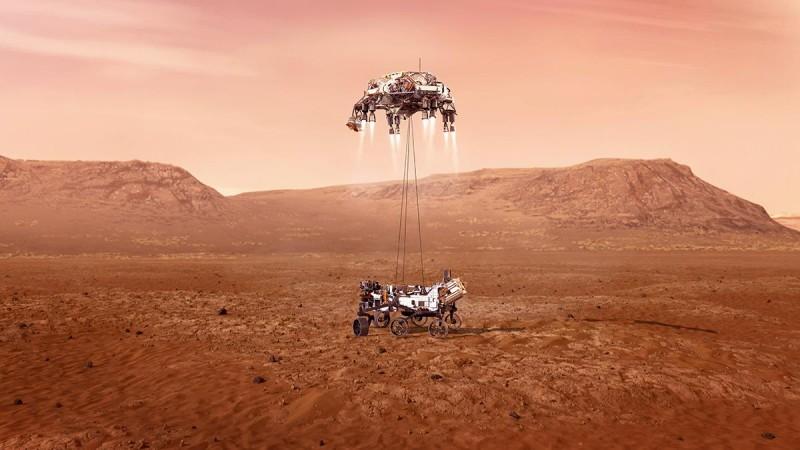NASA has successfully landed its Perseverance rover, fifth in a row, in a deep crater near the planet's equator called Jezero with engineers at Nasa's mission ground control in California monitoring the seven-minute "terror" into success.
The six-wheeled vehicle will now spend at least the next two years as its predecessor vehicles drilling into the local rocks, looking for evidence of past life in the locations selected exclusively for its erstwhile features. Jezero is believed to have held a giant lake billions of years ago, where there had been water, with the possibility far higher for traces of life.

The signal alerting controllers that Perseverance was down and safe arrived at 20:55 GMT on Thursday. Soon, the ground control erupted into joy and the applause continued when the first two images came in. They were taken by low-resolution engineering cameras with dust covering still-attached translucent lens covers, but it was possible to see a flat surface both in front and behind the rover.
Mars Rovers
Landing on Mars is never easy, and even though Nasa has become expert at it, everyone on the Perseverance team had spoken with great caution going into Thursday. This is the second one-tonne rover put on Mars by the US space agency.
The first, Curiosity, was landed in a different crater in 2012. It trialled innovative descent technologies, including a rocket-powered cradle, that Perseverance has also now put to good effect.
Where am I now? Check out this interactive map to zoom in and explore my landing site:https://t.co/uPsKFhW17J
— NASA's Perseverance Mars Rover (@NASAPersevere) February 19, 2021
And for the ground level view, my first images are here, with many more to come in the days ahead:https://t.co/Ex1QDo3eC2 pic.twitter.com/B6TJTikAyX
Controllers will spend the coming weeks commissioning the new rover, checking that none of its systems were damaged in what would have been a rough ride to the ground. Many pictures will be sent back to get a sense of the surroundings.
The targeted landing zone was just in front of what looks from satellite pictures to be the remains of a vast delta - a feature built by rivers as they push into a wider body of water and dump their sediment.
Perseverance to collect samples
Scientists hope that incorporated into this material are tell-tale signatures of past biology. Perseverance will sample the base of the delta and then move towards the rim of the crater. It's there that satellites have detected carbonate rocks, which on Earth are particularly good at trapping biological activity.
Perseverance has a suite of instruments that will researchers back on Earth will use to examine all these formations in detail, down to the microscopic level.
Touchdown confirmed. The #CountdownToMars is complete, but the mission is just beginning. pic.twitter.com/UvOyXQhhN9
— NASA (@NASA) February 18, 2021














